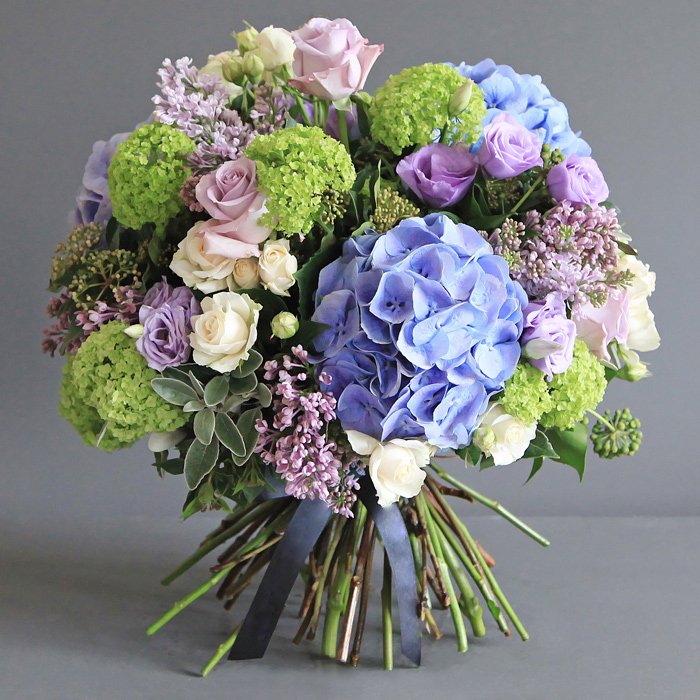A Florist’s Guide to Filler Flower Varieties
Filler flowers are the unsung heroes of floral arrangements. They add volume, texture, and a sense of balance while complementing the main blooms. Whether you’re creating a bouquet, centerpiece, or any floral display, choosing the right filler flowers is essential. Here’s a flower delivery guide to popular filler flower varieties and how to use them.
1. Baby’s Breath (Gypsophila)
Appearance: Tiny, cloud-like white or light pink flowers on delicate stems.
Uses: A classic choice for romantic and vintage arrangements. Baby’s Breath pairs beautifully with roses and peonies.
Best For: Weddings, soft and dreamy arrangements.
Care Tip: Keep stems hydrated to prevent wilting; they dry beautifully for long-term use.
2. Statice (Limonium sinuatum)
Appearance: Clusters of small papery flowers in purple, blue, white, yellow, or pink.
Uses: Adds a pop of color and texture. Perfect for rustic or wildflower-themed arrangements.
Best For: Mixed bouquets, dried flower arrangements.
Care Tip: Statice is long-lasting both fresh and dried.
3. Waxflower (Chamelaucium)
Appearance: Tiny, waxy blooms with a light citrus fragrance, often in white, pink, or purple shades.
Uses: Ideal for adding texture and a subtle scent. Pairs well with roses, lilies, and orchids.
Best For: Romantic, boho, and tropical arrangements.
Care Tip: Trim stems frequently to extend vase life.
4. Queen Anne’s Lace (Ammi majus)
Appearance: Delicate, umbrella-shaped clusters of tiny white flowers.
Uses: A great filler for natural, garden-style bouquets. Complements wildflowers and greenery.
Best For: Rustic and meadow-inspired designs.
Care Tip: Handle with care; stems can be fragile.
5. Solidago (Goldenrod)
Appearance: Bright yellow clusters of small flowers on tall stems.
Uses: Adds a vibrant touch and complements sunflowers, dahlias, and chrysanthemums.
Best For: Autumnal and sunny arrangements.
Care Tip: Avoid overwatering, as stems are prone to rot.
6. Aster
Appearance: Daisy-like blooms with small, colorful petals and yellow centers.
Uses: Adds a cheerful, whimsical touch. Works well with bold and soft blooms alike.
Best For: Seasonal and everyday bouquets.
Care Tip: Ensure proper hydration and remove any foliage submerged in water.
7. Ferns (e.g., Leatherleaf Fern, Maidenhair Fern)
Appearance: Lush, green foliage with intricate patterns.
Uses: Often used as a green filler to create depth and contrast against vibrant flowers.
Best For: Tropical, woodland, or classic arrangements.
Care Tip: Keep ferns moist and mist them to prevent drying.
8. Eucalyptus (Silver Dollar, Seeded, and True Blue)
Appearance: Silvery-green leaves with a fresh, herbal scent.
Uses: Adds a modern and elegant touch. Complements roses, hydrangeas, and lilies.
Best For: Minimalist, boho, and bridal arrangements.
Care Tip: Change water frequently to prevent the stems from becoming slimy.
9. Veronica
Appearance: Tall spikes of tiny blooms in white, pink, blue, or purple.
Uses: Adds height and dimension to arrangements. Pairs well with larger focal flowers.
Best For: Contemporary and garden-style designs.
Care Tip: Trim stems at an angle for better water uptake.
10. Limonium (Sea Lavender)
Appearance: Cloud-like clusters of small blooms in soft pastel shades.
Uses: Perfect for airy, light arrangements. Complements soft blooms like hydrangeas.
Best For: Romantic, beachy, or rustic bouquets.
Care Tip: Performs well both fresh and dried.
11. Bupleurum
Appearance: Clusters of small yellow-green flowers with delicate stems.
Uses: Adds an airy and organic feel. Ideal for cascading arrangements and loose, natural bouquets.
Best For: Spring and summer arrangements.
Care Tip: Handle gently, as stems can be delicate.
12. Astilbe
Appearance: Feather-like plumes in shades of white, pink, and red.
Uses: Adds softness and a touch of elegance. Often used in romantic and woodland designs.
Best For: Bridal bouquets and upscale arrangements.
Care Tip: Keep in cool water and avoid placing in direct sunlight.
13. Millet (Ornamental Grass)
Appearance: Textured, grain-like stalks in earthy tones.
Uses: Adds texture and works well in rustic, fall-inspired designs.
Best For: Harvest arrangements, modern floral designs.
Care Tip: Can be dried and preserved for long-term use.
14. Hypericum Berries
Appearance: Small, colorful berries in shades of red, green, white, or pink.
Uses: Adds visual interest and a playful touch. Pairs well with roses, gerbera daisies, and greenery.
Best For: Holiday, rustic, or romantic arrangements.
Care Tip: Avoid crushing the berries to maintain their appearance.
15. Thistle (Eryngium)
Appearance: Spiky, globe-like flowers in blue or silver hues.
Uses: Adds a unique, edgy texture. Works beautifully with succulents and modern arrangements.
Best For: Industrial, modern, or winter arrangements.
Care Tip: Keep away from direct heat and sunlight.
By combining focal flowers with the right filler flowers, you can create balanced, visually stunning arrangements tailored to any occasion. Remember, the key to a beautiful bouquet is harmony—use filler flowers to complement, not overshadow, the main blooms.

